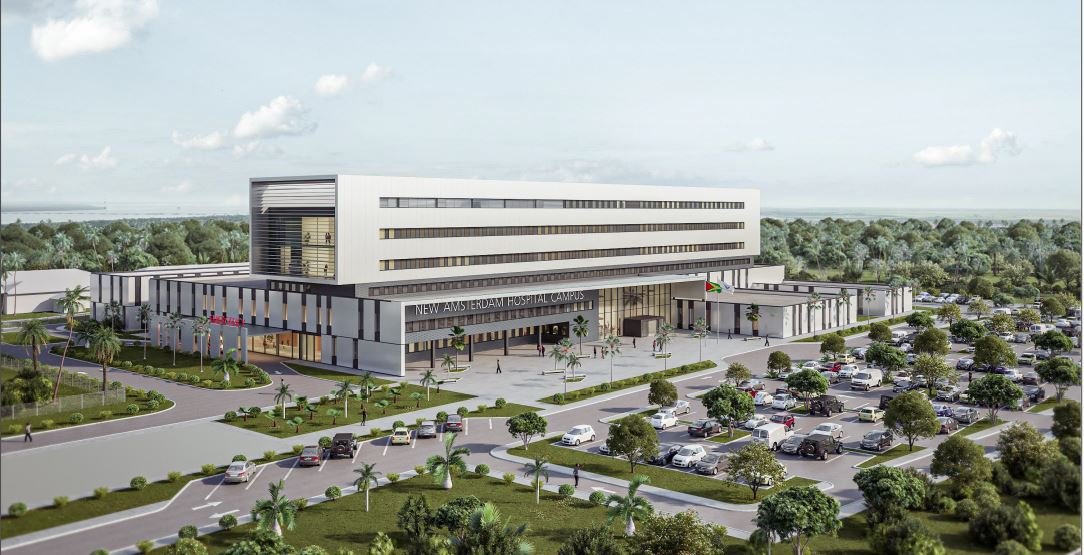Close

The Government of Guyana has delivered on its promise to improve healthcare access by transforming the New Amsterdam Regional Hospital in Region 6 (East Berbice–Corentyne) into a modern facility capable of offering specialized care locally. The extensive upgrades mean that residents no longer need to travel to Georgetown for advanced medical services, bringing essential healthcare closer to families and communities.
The modernization project has significantly strengthened the hospital’s capacity. Infrastructure improvements include newly expanded operating theatres, a state-of-the-art high-dependency unit (HDU), and upgraded diagnostic tools. These enhancements have enabled the hospital to provide a wider range of critical services, from advanced maternity care to paediatrics and internal medicine (Ministry of Health, Guyana, 2023 Annual Report).
Perhaps most transformative is the introduction of specialist outpatient clinics. Cardiology, orthopaedics, and dermatology services are now available in New Amsterdam, where previously patients had to rely on the Georgetown Public Hospital Corporation (GPHC) for such care. This shift was made possible through targeted training programs for healthcare staff and investments in equipment, ensuring services meet national standards (Department of Public Information, October 2023).
Health authorities have underscored that this upgrade is part of a national commitment to equitable healthcare. By reducing the gap between coastal and hinterland services, the government is aiming to create a health system where geography is no barrier to quality care. During an inspection visit in mid-2024, the Health Minister reiterated the vision of standardizing health services nationwide to improve outcomes for all citizens (Guyana Chronicle, July 2024).
Local residents have welcomed the improvements enthusiastically. Patients have noted the relief of avoiding long, costly travel for appointments, as well as the benefit of better follow-up care and more readily available medication. The project has also generated local jobs, both during construction and through the hiring of new nurses, technicians, and support staff to meet the expanded service needs.
These developments at the New Amsterdam Hospital exemplify the government’s commitment to delivering meaningful change. They show that healthcare isn’t just about providing treatment — it’s about supporting families to heal and thrive where they live.
This is what genuine progress looks like.

The Guyana Project is an independent media platform delivering fact-checked, ground-level reporting on politics, economy, and public life in Guyana. With a focus on transparency and development, we bring unfiltered news and thoughtful analysis to help shape a more informed, forward-looking nation.

Bringing Advanced Healthcare to Region 6: Upgraded New Amsterdam Hospital Redefines Access

Lorem Ipsum is simply dummy text of the printing and typesetting industry. Lorem Ipsum has been the industry’s standard dummy text ever since the 1500s, when an unknown printer took a galley of type and scrambled it to make a type specimen book. It has survived not only five centuries, but also the leap into electronic typesetting, remaining essentially unchanged. It was popularised in the 1960s with the release of Letraset sheets containing Lorem Ipsum passages, and more recently with desktop publishing software like Aldus PageMaker including versions of Lorem Ipsum.
t is a long established fact that a reader will be distracted by the readable content of a page when looking at its layout. The point of using Lorem Ipsum is that it has a more-or-less normal distribution of letters, as opposed to using ‘Content here, content here’, making it look like readable English. Many desktop publishing packages and web page editors now use Lorem Ipsum as their default model text, and a search for ‘lorem ipsum’ will uncover many web sites still in their infancy. Various versions have evolved over the years, sometimes by accident, sometimes on purpose (injected humour and the like).
Contrary to popular belief, Lorem Ipsum is not simply random text. It has roots in a piece of classical Latin literature from 45 BC, making it over 2000 years old. Richard McClintock, a Latin professor at Hampden-Sydney College in Virginia, looked up one of the more obscure Latin words, consectetur, from a Lorem Ipsum passage, and going through the cites of the word in classical literature, discovered the undoubtable source. Lorem Ipsum comes from sections 1.10.32 and 1.10.33 of “de Finibus Bonorum et Malorum” (The Extremes of Good and Evil) by Cicero, written in 45 BC. This book is a treatise on the theory of ethics, very popular during the Renaissance. The first line of Lorem Ipsum, “Lorem ipsum dolor sit amet..”, comes from a line in section 1.10.32.